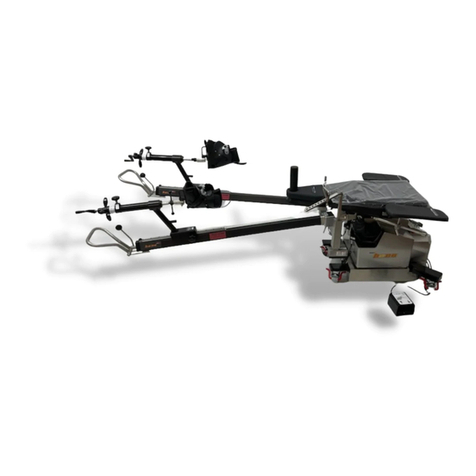
6875 hana™ Table Maint./Repair Manual NW0467 Rev. B
1
TABLE OF CONTENTS
1.0 INTRODUCTION..................................................................................................................................................4
1.1 General Description.........................................................................................................................................4
1.2 Specifications....................................................................................................................................................5
1.3 Shipping.............................................................................................................................................................5
1.4 Storage ..............................................................................................................................................................5
1.5 Glossary of Terms............................................................................................................................................6
2.0 CONTROLS IDENTIFICATION.........................................................................................................................7
2.1 Table Orientation..............................................................................................................................................7
2.2 Major Controls Location ..................................................................................................................................7
2.3 Control Panel Identification.............................................................................................................................8
3.0 BASIC OPERATION...........................................................................................................................................9
3.1 Control Operation.............................................................................................................................................9
3.2 Caster Floor Locks...........................................................................................................................................9
3.3 Moving the Table..............................................................................................................................................9
3.4 Hand Pendant Control...................................................................................................................................10
3.5 Leg Spars........................................................................................................................................................11
4.0 THE ELECTRICAL SYSTEM...........................................................................................................................12
4.1 Description ......................................................................................................................................................12
4.2 On/Off Power Switch......................................................................................................................................12
4.3 Component Circuit Breakers ........................................................................................................................12
4.4 Power Cord.....................................................................................................................................................12
4.5 Battery System ...............................................................................................................................................13
5.0 INSPECTION......................................................................................................................................................14
5.1 Acceptance & Transfer..................................................................................................................................14
5.2 Per-procedure/Post-procedure.....................................................................................................................14
5.3 Semi-Annual....................................................................................................................................................14
6.0 FUNCTION CHECK...........................................................................................................................................15
7.0 MAINTENANCE.................................................................................................................................................18
7.1 Cleaning and Disinfection.............................................................................................................................18
7.2 Adjustment - Spar Ball-joint Lock Handle...................................................................................................19
7.3 Preventative Maintenance Checklist...........................................................................................................19
7.4 Disposal of Electrical Components..............................................................................................................19
8.0 TROUBLESHOOTING......................................................................................................................................20
8.1 Table Malfunction...........................................................................................................................................20
8.2 Diagnostics Tree.............................................................................................................................................20
8.3 On-line Diagnostics........................................................................................................................................21
9.0 REMOVAL and REPLACEMENT of COMPONENTS.................................................................................22
9.1 Hand Pendant Control...................................................................................................................................22
9.2 Foot Control.....................................................................................................................................................22
9.3 Motion-Control Module..................................................................................................................................23
9.4 Internal Batteries............................................................................................................................................24
9.5 Leg Spar Rotation Wheel..............................................................................................................................25
9.6 Table Lift Assembly........................................................................................................................................26
9.7 Tilt / Trendelenburg Assembly......................................................................................................................27
9.8 Femur Lift Assembly, Left / Right.................................................................................................................28
9.9 Caster(s)..........................................................................................................................................................28
10.0 TECHNICAL DRAWINGS and PARTS LISTS...........................................................................................29
10.1 Standard Components Identification Chart..............................................................................................29
10.2 Replacement / Spare Parts List.................................................................................................................29
10.3 Interconnect Diagram, 120VAC.................................................................................................................29
10.4 Interconnect Diagram, 230VAC.................................................................................................................29
10.5 Table Assembly Bill of Materials................................................................................................................29
11.0 OSI TECHNICAL SERVICE...........................................................................................................................30
European Union EC Representative
Medical Products International Europe, B.V.
Schutweg 13a
5145 NP Waalwijk
The Netherlands
Telephone: +31 (0) 416 563 754/Telefax: +31 (0) 416 563 926




























